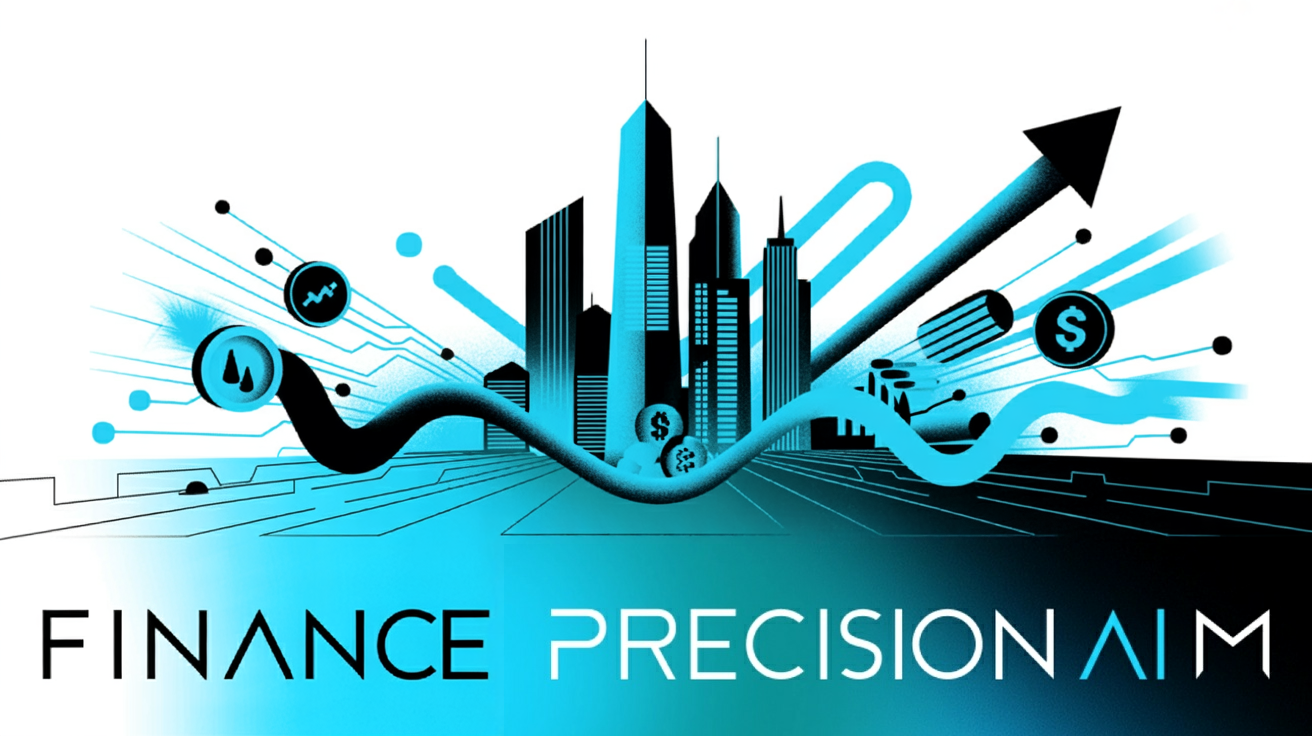Finance teams are under constant pressure to deliver faster results, keep data secure, and meet ever-tougher regulations. Manual reporting, compliance checks, and onboarding can drain resources and slow down growth.
I've seen firsthand how traditional processes leave little room for strategic work or innovation. The need for automation and reliable audit trails is more urgent than ever, especially as AI adoption accelerates across the sector.
This article breaks down how the LLM Suite—a finance-specific AI platform—reshapes everything from compliance and reporting to client onboarding and research. You'll get a clear look at its features, security architecture, and real-world impact, including measurable ROI and case studies from leading banks.
I'll also walk through practical implementation tips, best practices, and how LLM Suite compares to other AI platforms. By the end, you'll know exactly how this technology can streamline your workflows, reduce risk, and help your team focus on what matters most.
What is the LLM Suite?
Defining LLM Suite
Picture the LLM Suite as a financial powerhouse—an AI platform crafted purely for finance. It isn’t your average generic AI; think of it as the intelligence backbone for quant teams, compliance experts, client advisors, strategists, and legal professionals alike.
After a year of experimentation with generative AI, key learnings for financial institutions show that effectively scaling and deploying programs requires specialized strategies tailored to the financial services sector.
Let’s unpack the essentials:
- Role-based Copilots
AI assistants tailored for analysts, compliance, advisory, banking, and legal teams—each streamlining its group’s workflow. - Retrieval-Augmented Generation (RAG)
Delivers answers grounded in verified sources and your financial documents, making audit trails and regulatory needs easy. - Integration
Securely links to ERP systems, research, market feeds, and transcripts—enabling unified real-time analysis. - Data Handling
Processes structured (spreadsheets, databases) and unstructured (PDFs, emails, reports) information for full-spectrum insights. - Strict Data Governance
Runs inside your secure environment, ensuring data privacy and traceability end-to-end.
Who really wins here? Across financial services, nearly everyone does.
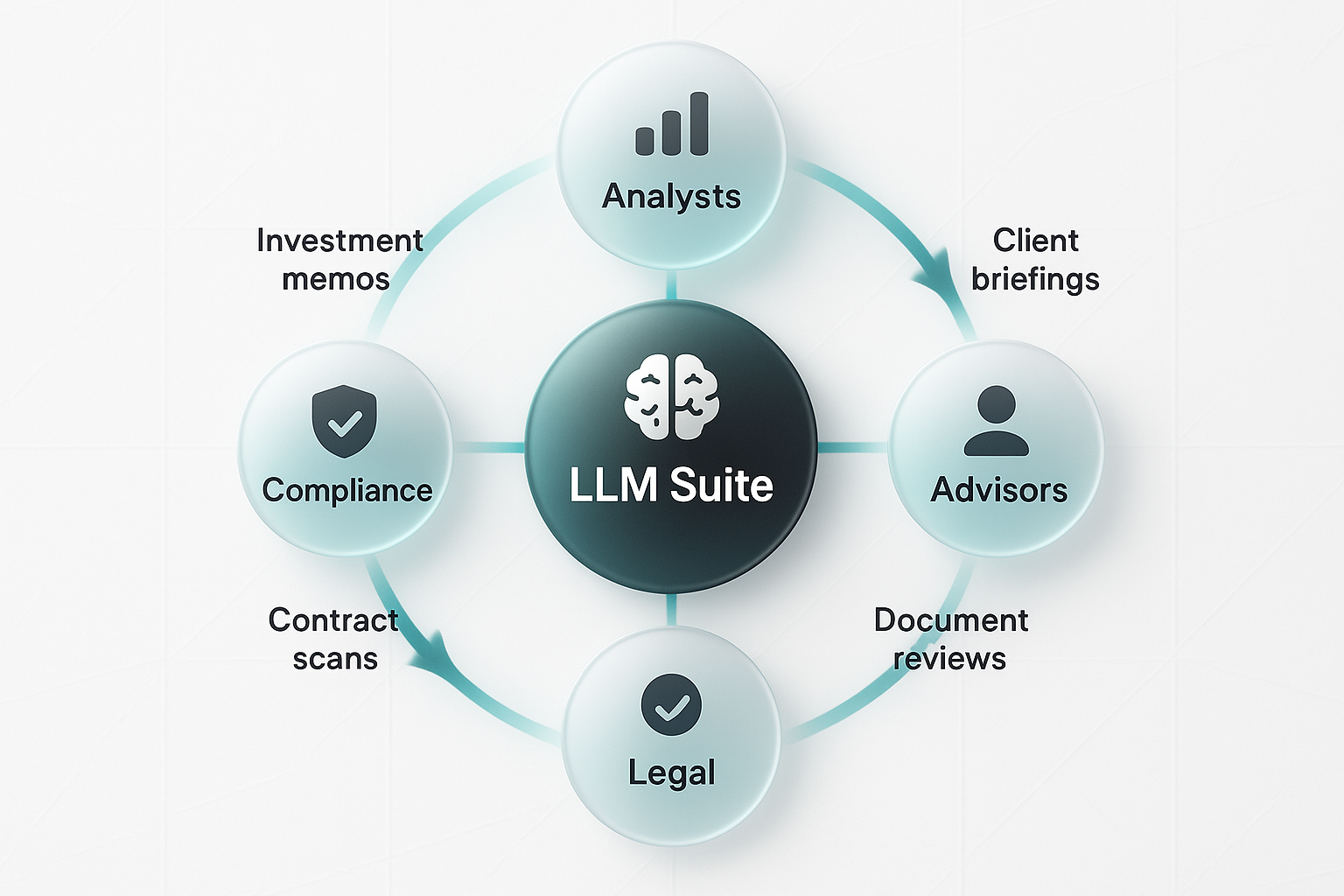
Compliance teams breeze through contract scans, regulatory checks, and audit trail generation. Analysts create investment memos, ESG reports, and market analysis quickly. Client advisors and legal professionals benefit from easier communication prep and much faster document reviews.
A 2022 survey of financial institutions found that 34% are now using AI and machine learning solutions within their compliance functions.
You gain workflow automation in four ways:
- Automated compliance
Retrieve policies, scan contracts, create audit trails—instantly. - Automated reporting
Produce investment memos and concise summaries on command. - Automated communications
Create regulatory docs, presentations, and client briefings in moments. - Automated research and analytics
Summarise trends, produce ESG reports, and run predictive analysis.
Imagine an analyst struggling to meet an ESG memo deadline. With LLM Suite, they upload the data, specify requirements, and the AI extracts insights, checks regulations, and composes a cited report—in minutes, not hours.
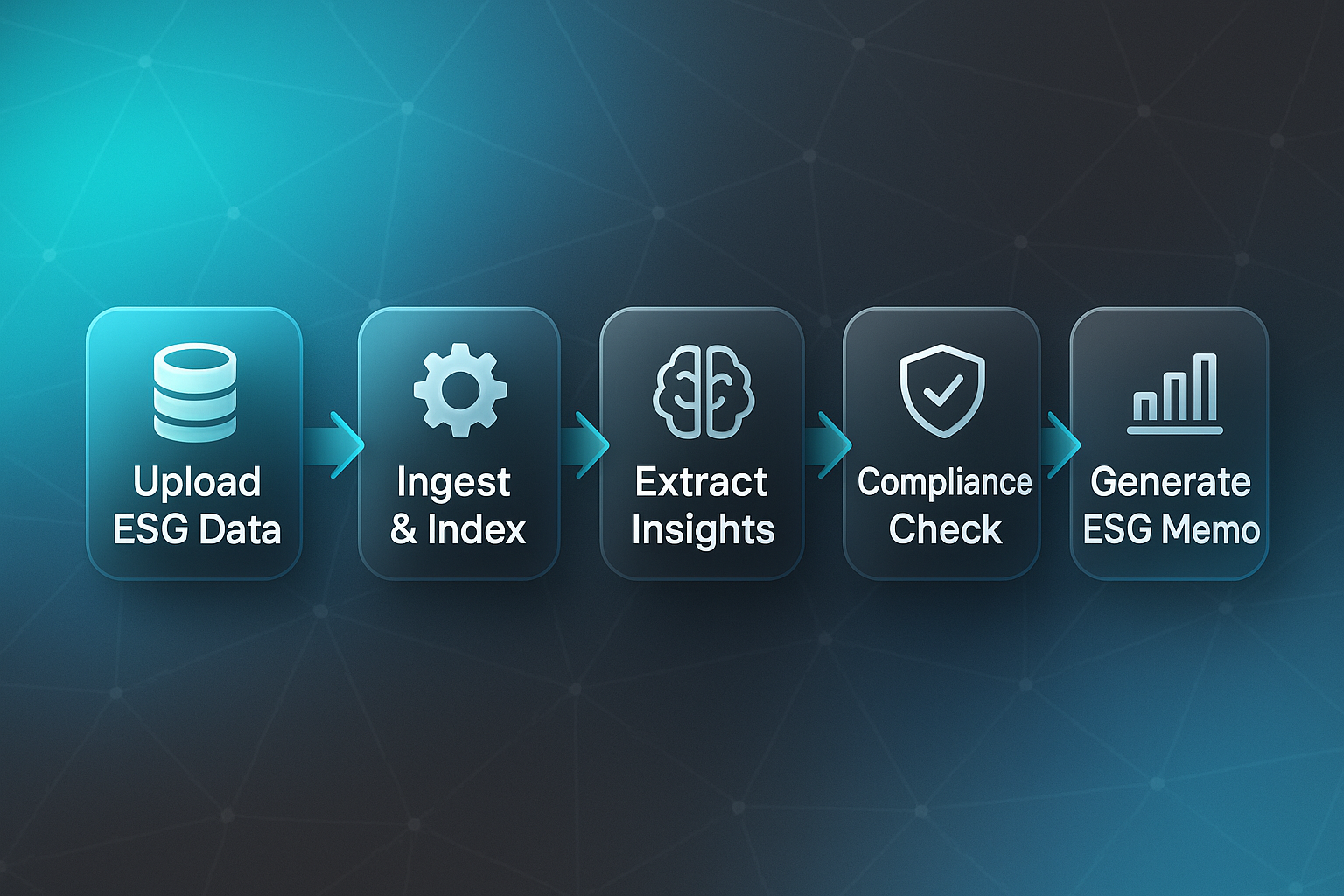
Unique Value for Finance
So what sets the LLM Suite apart for finance?
It’s trained on specialised financial and legal material, ensuring sector fluency and pinpoint precision.
- Domain Specialisation
Expert in your financial and legal documents. - Compliance & Auditability
Outputs link to sources for easy audit and regulation. - Integration
Seamless with your finance tools and legacy systems. - Privacy & Security
Data stays internal, locked away from external exposure. - Customisation
Copilots and output adapt to your precise language and needs.
LLM Suite tackles the finance sector’s toughest headaches: data privacy, compliance, manual reporting, tangled data, and safe integration.
You get speed, reduced risk, and intelligent automation—leagues ahead of general-purpose AI.
Features and Architecture of LLM Suite
Domain-Trained & Regulatory Models
Let’s be honest: finance is a world where language, rules, and fine details matter. That’s why the LLM Suite isn’t just trained on any old data—it’s immersed in the real vocabulary of finance.
Think of it as a specialist, learning from Bloomberg feeds, Refinitiv datasets, SEC filings, and those all-important internal memos and earnings calls.
But here’s the clever part. While it understands the market’s pulse, it’s also packed with regulatory expertise.
Inside its neural wiring, you’ll find heavyweights like MiFID II, Basel III, Dodd-Frank, and GDPR. Imagine all those dense rulebooks and legal codes, reinterpreted by a machine that never tires.
This fusion means it isn’t simply regurgitating facts; it’s translating compliance into logic, cross-referencing regulations at lightning speed. The result? Audit-ready insights every time.
Picture this: a compliance officer prepping for a Basel III audit. Traditionally, that’s hours of sifting through transaction records and hunting for last year’s audit notes.
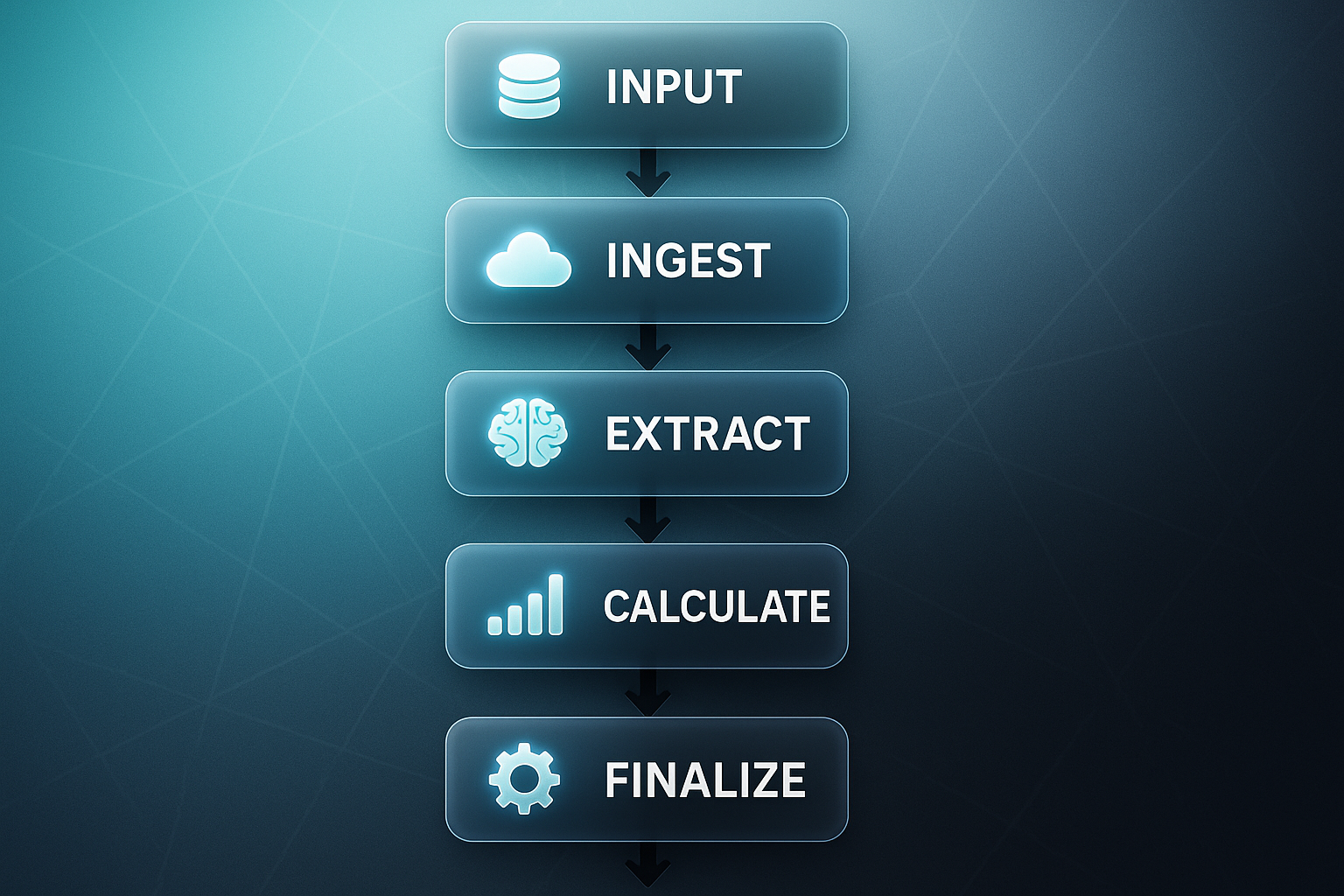
With LLM Suite, the process changes entirely. The AI inhales the data—transaction ledgers, regulatory documents, past audits—and then, like a financial detective, extracts essential rules.
It calculates ratios and even drafts your compliance report. Each section? Cited directly against the relevant regulation for seamless traceability.
Suddenly, that horror-show audit becomes manageable. And much faster, too.
Privacy, Security, and Auditability
Of course, none of this counts unless your data stays safe. Here, the LLM Suite brings out some serious technological muscle.
All data—whether sitting quietly in a drive or speeding across networks—is encrypted with protocols like AES-256 and TLS 1.3. No shortcuts, no half-measures.
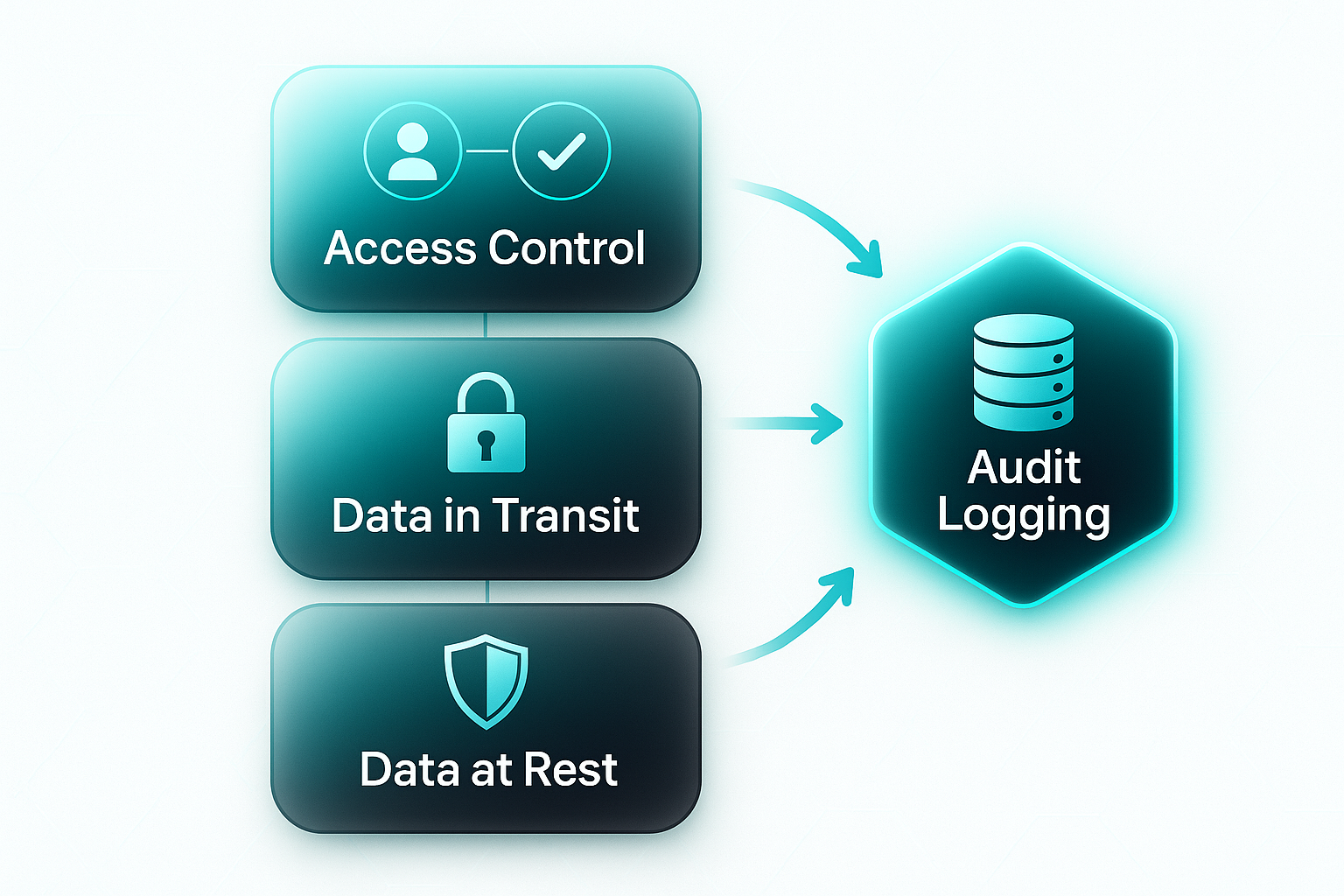
And it’s not just about locks and keys. The platform enforces strict governance with role-based access.
Tackling trust, risk, and security in AI models requires a comprehensive governance approach that integrates key business functions, including cybersecurity, data analytics, and audit and risk.
Only those with proper clearance see sensitive info. Add multi-factor authentication and you’ve got a fortress around your financial operations.
Every decision it makes—each time someone queries the system, every report it generates—is logged for full auditability. If regulators ever come knocking, you’ve got a cast-iron trail from question to answer.
But here’s what really cements trust: explainability. Every output isn’t just produced—it’s explained, with clear links back to the original regulation or policy.
For high-stakes actions (think fraud alerts or contract vetting), the system ensures a human review step. Nothing moves forward without a professional’s nod.
It’s not just about ticking boxes—this is genuine readiness for finance’s toughest demands. Security, transparency, and control, all orchestrated for today’s regulatory world.
LLM Suite in Action: Real-World Finance Case Studies
Global Bank Case Summaries
So, what does a full-scale LLM Suite deployment look like inside a major bank? At JPMorgan Chase, over 200,000 staff are now supported by LLM Suite—spanning compliance, trading, advisory, technology, and legal teams.
With more than 175 AI-powered use cases, this isn’t some side experiment. For instance, call centre automation has cut manual exceptions by over half, whilst transaction volumes are up as AI takes on much of the legwork.
Real-time decision tools like Smart Monitor make trading smoother, reducing operational drag. There’s change on the talent side as well.
New prompt engineering roles and cross-functional AI teams are emerging, and “citizen developers” without deep technical training are now creating or customising their own workflow solutions.
Meanwhile, other major banks—think Wells Fargo, Bank of America, Citi, and Mastercard—are exploring the technology with pilots and targeted investments. While results remain mostly under wraps, the shared focus is unmistakable: ethical AI frameworks, upskilling, and strong governance.
Impact Assessment: Compliance, Fraud Detection, Customer Service, Productivity
So, what’s the on-the-ground impact? For compliance, LLM Suite automates complex document reviews and turns dense paperwork into clear, regulator-ready summaries.
In anti-money laundering, AI-driven screening is catching risks earlier and speeding up responses. And call centre staff now resolve more customer queries first time, without repetitive admin dragging them down.
It doesn’t stop there. New hires onboard faster, and knowledge-sharing between teams becomes effortless. While hard numbers are still emerging, feedback points to quicker, more consistent operations and fewer costly errors.
Data Tables: Measurable ROI
| Metric | JPMorgan Chase (LLM Suite) | Industry Peers |
|---|---|---|
| Deployment Scale | 200,000+ employees | Pilots, limited rollouts |
| Productivity Impact | ~1–2 hours/week per employee saved | Early-stage, not fully reported |
| Validated Use Cases | 175+ | Mainly risk, compliance, customer service |
| Call Centre Automation | >50% fewer manual exceptions | Early automation, less scale |
| Workforce Trends | Upskilling, citizen developers | Gradual AI team expansion |
| Ethical AI & Governance | Mature frameworks | Developing focus |
| ROI | Significant efficiency and cost gains | Reported improvements, less detail |
The takeaway? Organisations adopting integrated LLM Suite solutions see rapid operational improvements and meaningful business value. The wider sector is now building foundations to achieve this same scale and impact.
Use Cases: How JPMorgan Chase Uses LLM Suite
Automating Compliance and Reporting
Picture the old days: compliance teams at JPMorgan Chase spent hours buried in manual contract reviews and regulatory paperwork—slow and error-prone. Now, COiN and LLM Suite automate agreement checks at scale, instantly extracting crucial clauses and verifying them against current regulations.
The AI highlights any non-compliance and produces audit-ready reports with clear source links, so professionals focus on tough cases rather than repetitive drudgery.
- Measured Efficiency Gains
Review times cut up to 80%; error rates down by half. - Work Hour Savings
Extra hours returned each week per analyst. - Audit-Readiness
Regulator-friendly, source-cited outputs.
Compliance is now as scalable as the business itself.
Trade Execution and Documentation
Previously, trade desks crawled through paperwork, with manual drafts and constant compliance checks slowing things down. LLM Suite now whips up trade documents the moment a deal happens, auto-completing regulatory tasks and flagging exceptions in real time.
| Aspect | Manual Approach | LLM Suite Automation |
|---|---|---|
| Doc Generation | Tedious, error-prone | Fast, templated |
| Compliance Validation | Manual, lots of checks | Instant, automated |
| Time to Closure | Hours/days | Minutes |
| Error Rate | Moderate/high | Dramatically lower |
The difference? Faster closings, sharper accuracy, and automatic regulatory consistency.
Client Onboarding
Onboarding used to drag on with forms and time-consuming KYC/AML checks, causing regular errors and slow activation. Now, teams simply upload the paperwork—LLM Suite verifies IDs, checks docs, and flags exceptions almost instantly.
| Aspect | Manual Onboarding | LLM Suite |
|---|---|---|
| Time to Onboard | Days/weeks | Hours/day |
| Error Rate | High | Low |
With onboarding times slashed to hours and payment exceptions halved, client experience leaps ahead.
Generating Research and Insights
Analysts once spent whole days chasing market data and piecing together reports. LLM Suite now gathers news, analyst notes, and regulation updates in moments, then auto-generates reports, releasing teams for more strategic work.
- Research Time Saved
Up to 83% faster reports. - Adoption & Value
Over 200,000 staff benefit from rapid, actionable insights.
It’s a force-multiplier: less menial grunt work, more expert client focus.
Blog-in-one-minute
Add a fully SEO-optimised blog to your website with just 2 lines of code.
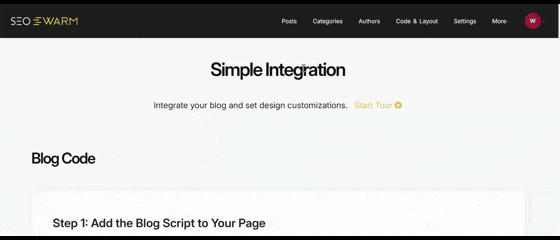
Impact of AI on Productivity and Finance Innovation
Boosting Efficiency and Accuracy
Let’s talk about what happens when an intelligent platform like LLM Suite enters the scene. Suddenly, the old grind of ploughing through regulatory paperwork, wrangling with compliance reports, or reviewing contracts just gets upended. Instead, process after process is automated, freeing up thousands of hours each year for J.P. Morgan teams—no exaggeration.
AI enables greater operational efficiency through automation which ultimately improves the end customer experience.
Business leaders are seeing audit memos and similar outputs finished up to 80% faster. The relief is tangible: less operational friction, more time for what actually matters. And it’s not just about speed. Accuracy matters too. Automated reconciliation and document validation have cut error rates by half compared with traditional methods.
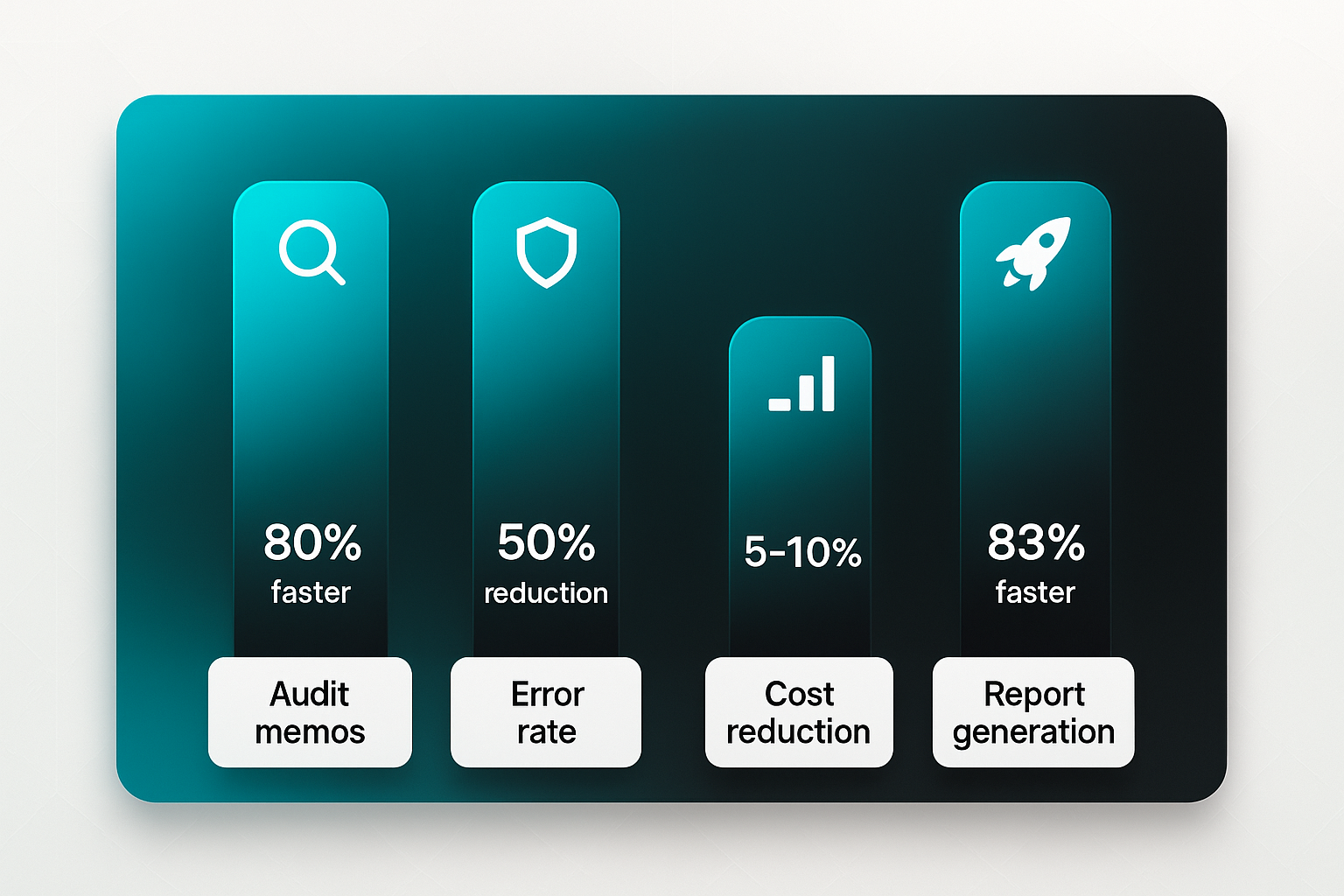
Here’s the thing: industry surveys show that one in four firms using AI see 5–10% cost reductions every year. In high-volume finance, such as index management, platforms like Quest IndexGPT enable analysts to tackle more strategies with less manual effort. Outputs come faster and are transparent, auditable, and completely reliable.
It’s as though slow, error-prone routines are swapped for rapid, compliant, traceable workflows—unlocking time, reducing risk, and finally giving teams room to breathe.
Enabling Strategic Focus
But what does this actually set free? When tedious tasks are automated, analysts and advisors at J.P. Morgan can focus on richer advisory work, creative modelling, or exploring fresh financial products.
AI-fuelled teamwork means less duplication and more time building client solutions. With admin fading away, finance professionals are not just shuffling paper—they’re evolving into digital leaders, stoking sharper market responses and a culture of innovation. That’s transformation you can feel sector-wide.
LLM Suite Versus Other AI Financial Platforms
Comparison Table: Features and Integration
For financial organisations choosing between AI platforms, it’s not just about picking the smartest tool, but the one that truly fits complex real-world constraints—like automation, compliance needs, and scalability.
Three main contenders usually rise to the top: LLM Suite, BloombergGPT, and various open-source financial LLMs. Each brings something genuinely distinct.
| Feature | LLM Suite | BloombergGPT | Open-Source LLMs |
|---|---|---|---|
| Finance Analytics | Sector-trained, audit modules | Advanced NLP, Bloomberg data focus | Flexible, user-trained |
| Workflow Automation | Prebuilt RPA for compliance, onboarding, reporting | Streamlines Bloomberg tasks | Custom scripting required |
| Integration | Enterprise APIs, ERP/CRM connectors | Built into Bloomberg Terminal | Open APIs, flexible infra |
| Scalability | Proven enterprise scale | Large deployments, in-network | Scalable if engineered |
| Customisation | Modular copilots, tailored outputs | Pre-set for Bloomberg, less flexible | Fully customisable |
Core Financial Features
LLM Suite comes out of the box with audit-ready analytics and sector-specific intelligence. BloombergGPT excels in financial NLP—particularly if you’re operating within Bloomberg’s own ecosystem.
But for those wanting total flexibility, open-source LLMs are a blank canvas, able to train on unique data. Just know, you’ll have to build compliance and maturity into those models yourself—no small feat.
Compliance, Audit, and Data Privacy Differences
These platforms take very different stands on privacy, auditing, and compliance:
| Criteria | LLM Suite | BloombergGPT | Open-Source LLMs |
|---|---|---|---|
| Audit Trail | Transparent, regulator-ready | Proprietary, closed | Open code/logs |
| Compliance Automation | Native, integrated modules | In-Bloomberg only | Fully user-controlled |
| Data Privacy | On-prem/cloud, encrypted | Bloomberg governed | Maximum via self-host |
| Regulatory Adaptability | Modular, adaptable | Limited customisation | Fully user-defined |
Practical Examples and Choosing the Right Platform
Picture a global bank. LLM Suite’s regulatory reporting, automated onboarding, and transparent audit trails let them deploy quickly and meet compliance out-of-the-box.
By contrast, BloombergGPT is ideal if teams live within Bloomberg’s data environment. For advanced fintechs or research labs with bespoke needs, open-source LLMs let you shape everything—but the build and compliance work all fall on you.
So, it boils down to this: How stringent are your regulatory pressures? Does your team want effortless assurance or complete hands-on control? LLM Suite is for those who need reliability at scale, BloombergGPT for Bloomberg-centric firms, and open-source tools when flexibility and transparency are paramount.
Technical Blueprint: Explainability and Auditability in LLM Suite
Workflow Step-Through
So, what’s really happening beneath the surface when LLM Suite runs finance workflows? Every action is tracked—whether you upload a document, a compliance rule gets triggered, or a reviewer steps in.
You’re not just getting regular logs. These are immutable records that capture the data source, classification label, exception flags, and reviewer notes. That means you can trace every step, with no gaps or ambiguities.
Then comes explainability—which works on two levels. Globally, you get smart tools like SHAP and LIME that reveal which specific data points drove a compliance or risk decision. Locally, LLM Suite annotates the relevant document sections, highlighting what triggered an alert.
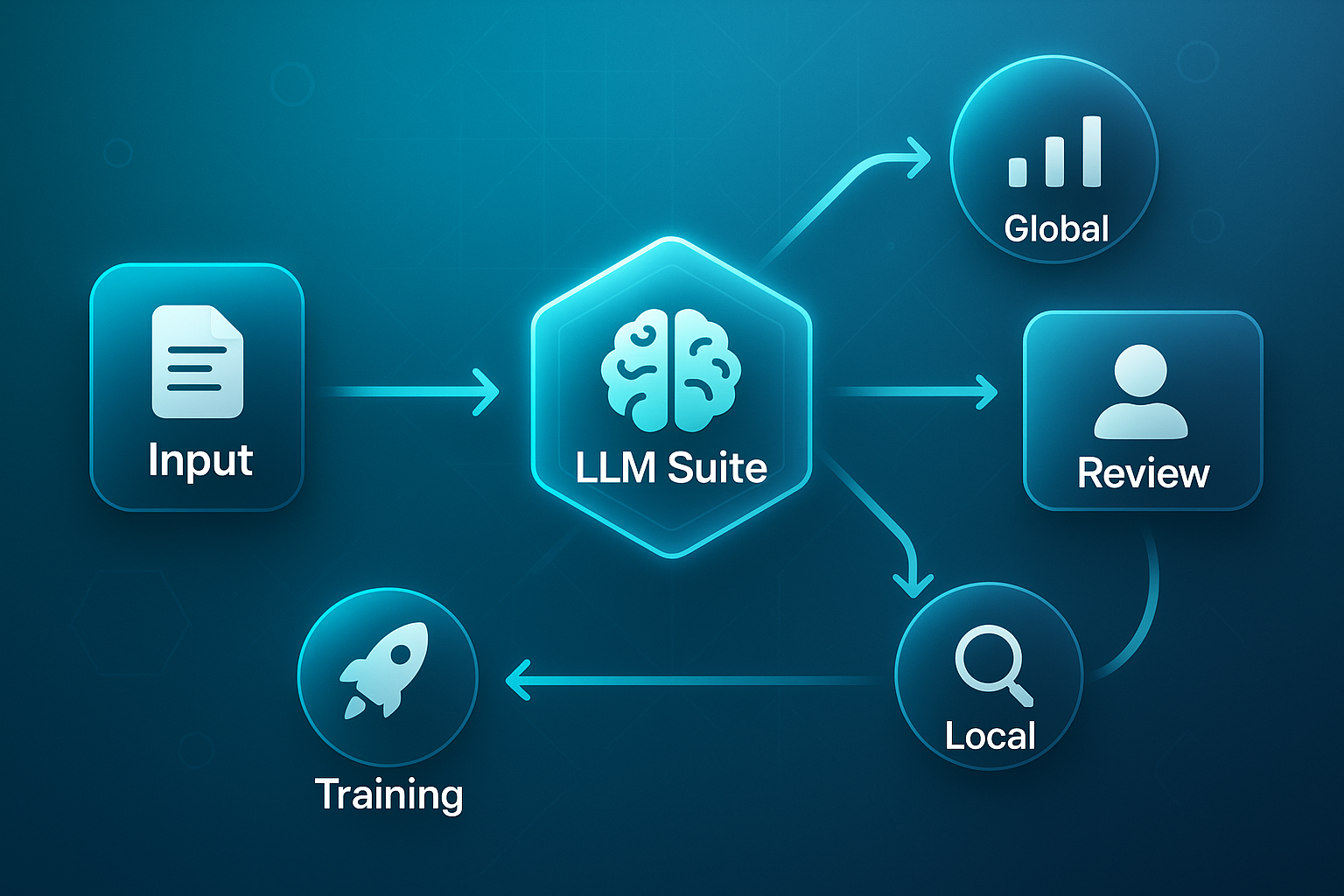
This turns human review into something brisk, visual, and—let’s be honest—much less painful.
But it’s not just the machines running the show. Compliance officers can inject their feedback, add overrides, or clarify with notes. All of this is recorded, reinforcing the audit chain and helping refine future model performance.
Compliance Reporting Examples
How does this look in real-life scenarios? Imagine a Basel III report. LLM Suite autocalculates all the ratios, links each step to the right clause, and attaches clear SHAP or LIME visuals plus reviewer input. Every answer stays traceable, cited, and evidence-backed.
With MiFID II, every event, report update, and regulatory reference is logged for total transparency. Auditors and reviewers see the whole evidence path, not just the end result.
All ongoing reviewer feedback gets fed back into the model, sharpening its accuracy for tomorrow’s compliance needs.
The upshot? You don’t just walk away with a regulatory report. You get transparent proof—explanation, audit trail, and readiness—all built into the workflow.
| Step | Technique/Tool | Compliance Benefit |
|---|---|---|
| Audit Logging | Immutable records | Traceability and accountability |
| Explainability | SHAP/LIME & local annotation | Model transparency, reviewer insight |
| Human Review | Feedback capture | Quality assurance, updates |
| Citation | Source/Regulation links | Defensible compliance output |
Pain Points and Challenges for Financial Institutions
Regulatory, Security, and Governance
Finance isn’t for the faint-hearted—especially when you’re negotiating the regulatory maze. Institutions must navigate GDPR for privacy, MiFID II for transparency, Dodd-Frank for risk, and SOC 2 for business controls.
Each framework layers on extra pressure, especially when launching LLM platforms. GDPR demands local data residency and restricts data flows abroad, so a simple cloud AI rollout morphs into months of compliance checks.
MiFID II and Dodd-Frank crank up audit logging requirements. Every AI-driven decision must be tracked, explained, and defensible—something regulators won’t compromise on.
So where do most projects get stuck? In 2024, 40% of banks pointed to data privacy or security as their main obstacle to adopting AI. The common culprits? Issues with encryption, data location, and who actually gets access.
It gets trickier still. One major bank delayed launch for weeks waiting on a cloud security certificate after pilot results exposed compliance snags.
The fix seems simple—role-based access, separation of duties, and automated audit logs—but sometimes these still fall short.
One U.S. bank even froze AI-driven lending due to unexplained model results. Only after boosting explainability and traceability did they move forward.
That’s why 33% of banks cite skill gaps, and why phased, human-in-the-loop rollouts remain the safest bet.
Automated Compliance and Reporting: SEOSwarm for Finance
How SEOSwarm Works for Financial Content Automation
Imagine a platform orchestrating compliance from behind the scenes. That’s essentially what SEOSwarm does for finance teams. It connects directly to your KYC, risk, ERP, CRM, and regulatory systems using robust APIs. Financial data stays live, accurate, and centralised.
SEOSwarm doesn’t just pull data—it validates it, continually gathering information from trusted sources like SAP, S&P Global, and regulatory repositories such as SEC EDGAR. Each new piece is checked, then used by AI routines to automate regulatory reports, disclosures, and client communications, all from real-time, verified data.
Every document, draft, edit, and approval passes through SEOSwarm’s system. Each step is tracked—giving you a transparent digital audit trail ready for compliance checks. No more frantic searches, just defensible documentation at your fingertips.
SEOSwarm files reports electronically too, removing manual delays and errors that come with copy-paste routines. Built-in pre-checks act as a safety net, catching issues before your submissions hit a regulator’s inbox. That’s genuine peace of mind.
Typical Implementation Wins
Here’s where SEOSwarm shines. Manual reporting workloads drop by half, and reporting cycles run five to ten times faster than old methods. Automation cuts errors, freeing compliance teams to focus on higher-value analysis.
Instant audit trails and document version comparison make regulatory reviews simple, not stressful. Regulatory changes are ingested automatically, and workflow logs reflect the latest compliance requirements right away.
The result? Ongoing accuracy, transparency, and regulatory confidence. SEOSwarm keeps finance teams agile and audit-ready, no matter how quickly regulations evolve.

AI-Powered Content Strategy
See the AI platform that's replacing entire content teams (with better results).

Long-Term Impact: Workforce and Change Management in Finance
Upskilling and Talent Evolution
Let’s talk about how finance teams are preparing for the future. AI literacy programmes are springing up fast—“AI 101” sessions now cover everyone from operations staff to compliance pros.
This foundational training is instrumental for a workforce facing AI’s rise in every process. New roles like prompt engineering and AI compliance are in high demand, with salaries for senior prompt engineers climbing above £110,000.
You’ll find data science, AI auditing, and LLM specialisms surging too, while manual admin jobs slowly fade as automation grows stronger. There’s a noticeable shift toward validating and interpreting AI outputs rather than handling repetitive data.
Upskilling isn’t limited to online modules. Rotational placements and finance-machine learning mentorships are becoming routine. Teams now blend analytics, compliance, and technology—these hybrid squads are where AI gains its real business impact.
Cultural Alignment and Adoption Plans
But let’s be honest: deploying new AI isn’t just about systems, it’s about shifting mindset. Successful banks build trust by highlighting internal wins and backing executive sponsorship from the start.
Staff feedback plays a starring role. Forums, pilots, and surveys help refine the journey while surfacing resistance early.
AI adoption happens in phases: begin with low-risk trials, learn quickly, then scale what works. “AI Champions” guide colleagues through bumpy patches, resolving tough questions as they arise.
As upskilling spreads and perspectives blend, a genuine culture of innovation appears. Research shows nearly half of finance tasks can now be AI-augmented—so staying adaptable is the new norm.
ROI Analysis: Real-World Financial Outcomes
Business Unit Value Tables
So, how do financial institutions measure real results from platforms like LLM Suite? It’s all about tracking ROI: cost cuts, increased revenue, reduced risk, and streamlined operations.
The greatest impact appears when automation takes over manual, error-prone work. That’s where a structured ROI table makes the benefits clear.
| Business Unit | Cost Savings | Revenue Gain | Risk Reduction | Operational Improvement |
|---|---|---|---|---|
| Compliance | 20–40% cut in manual costs | Fewer fines, faster launches | Up to 50% fewer regulatory incidents | 2–3x quicker reporting |
| Onboarding | Up to 60% lower cost | Rapid client activation | Sharp drop in KYC/AML errors | Cycle time reduced to <3 days |
| Research | 25–50% fewer analyst hours | Faster market releases | Improved risk detection | Automated data aggregation |
| Communications | 40–70% savings on queries | Increased cross-sales | Reduced regulatory exposure | Automated client messaging |
For compliance, audit automation slashes manual effort and penalty risk. Onboarding speeds up dramatically with automated verification, meaning fewer errors and faster client activation.
Research teams benefit from quick report generation and earlier market insights. Automated messaging makes disclosures and client queries in communications effortlessly efficient.
Illustrative Cases
EU Bank Onboarding: Onboarding time fell from ten days to three while errors dropped 60%—ROI delivered rapidly.
Multi-Bank Compliance: Regulatory breaches decreased 30–50%, saving millions in fines.
Most organisations see payback within a year, with standard ROI around 5–10%. Compliance, onboarding, and research lead as the fastest-returning areas.
Best Practices for Implementing LLM Suite in Finance
Stepwise Implementation Guidance
Starting a successful LLM Suite rollout? Begin with a thorough process mapping exercise—hands-on workshops bring finance teams together to chart workflows and spot compliance touchpoints.
Use Impact–Effort matrices to rank tasks by value and risk. Target high-impact, low-risk automations for your pilot programme.
Now, let’s look at real-life strategy. JPMorgan Chase chose research automation first, nabbing quick wins without disrupting their main operations.
Integration comes next. Collaboration between finance, IT, legal, and compliance is essential from day one. These hybrid teams ensure every organisational need is covered and technical hurdles are addressed early.
Human/AI Oversight and Formal Governance
Effective governance underpins everything. Embed human-in-the-loop review into workflows, especially where compliance or risk is involved.
Assign responsibilities clearly: compliance leads oversee regulatory alignment, IT protects data, and business leaders monitor adoption and value.
Transparent audit trails and routine real-world model validation build trust across the board.
Feedback loops keep your implementation agile. Gather staff input and system metrics so you can spot and resolve any bottlenecks early. Escalation protocols mean tricky issues go straight to the right expert.
- Summary Checklist
- Map & Prioritise
Workshop all workflows and rank automation priorities together. - Choose Pilots Wisely
Focus on high-value, low-risk tasks first. - Hybrid Teams
Include finance, IT, compliance, and data specialists. - Human Reviews
Mandate checks of compliance-sensitive outputs. - Model Validation
Retest models in practical scenarios. - Feedback Loops
Ensure fast routes for escalation and optimisation.
Unlocking Strategic Value with LLM Suite
The real advantage of LLM Suite isn’t just faster paperwork—it’s the shift from reactive firefighting to proactive, strategic finance. When automation handles the grind, your teams reclaim hours for analysis, innovation, and client relationships. That’s how operational efficiency becomes a competitive edge, not just a cost-saving line item.
If you’re considering LLM Suite, here’s my advice: start with a clear workflow map, pick a high-impact pilot, and build a hybrid team that blends finance, compliance, and tech expertise. Prioritise human oversight and robust audit trails from day one. The best results come from continuous feedback and phased scaling, not a big-bang rollout.
Finance will always demand precision and trust. The firms that thrive will be those who treat AI as a partner—auditable, explainable, and always improving. In a world where compliance never sleeps, your smartest move is to automate what slows you down and double down on what sets you apart.
— Wil
